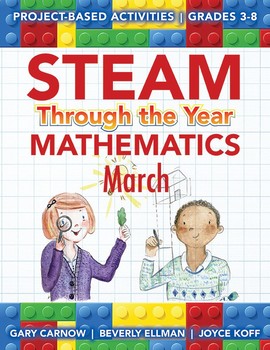STEAM Through the Year: Mathematics – March Edition
- PDF
Description
STEAM Through the Year: Mathematics for March guides you through the month with STEAM lessons and projects. Students build mathematical proficiency with monthly-thematic lessons correlated to the National Council of Teachers of Mathematics standards. Here you will find easy-to-use lessons providing practical strategies and problem-solving activities. The math and poetry lessons are themed around March special days and holidays – Women’s History Month, Music in the Schools Month, St. Patrick’s Day and Suddenly It’s Spring. Students gain access to the work of great poets by understanding and recognizing poetic forms. Need a creative STEAM math lesson idea? Simply turn to one of the selected days and you’re off and running. The math and poetry lessons are classroom-tested and provide enjoyable learning experiences in a variety of environments: traditional classrooms, home schooling, after-school programs, scouting, and gifted and talented programs. The resources and learning approaches are especially suited for gifted learners as they are inquiry-based and provide discovery learning opportunities with lots of higher-level questions. The activities also encourage student choice for independent or group work.





